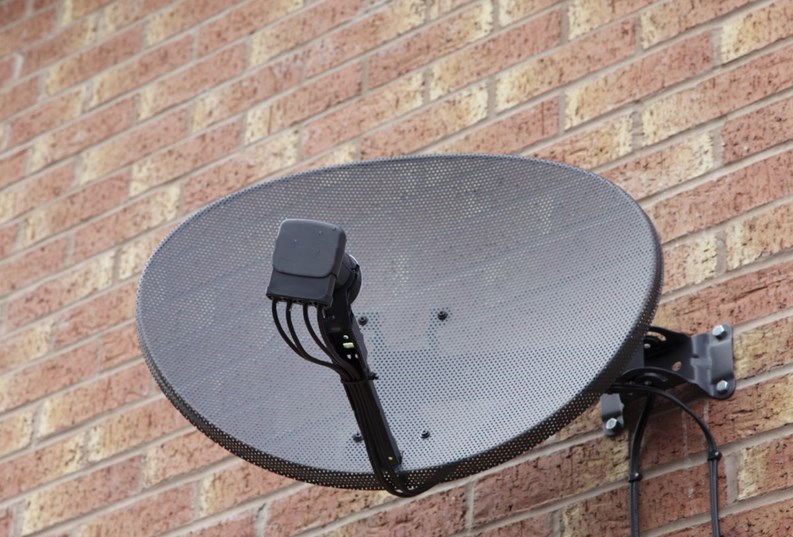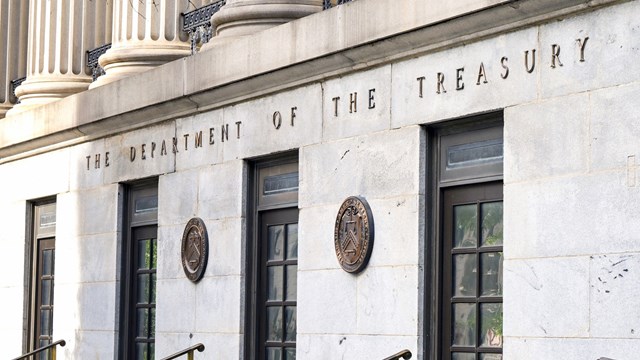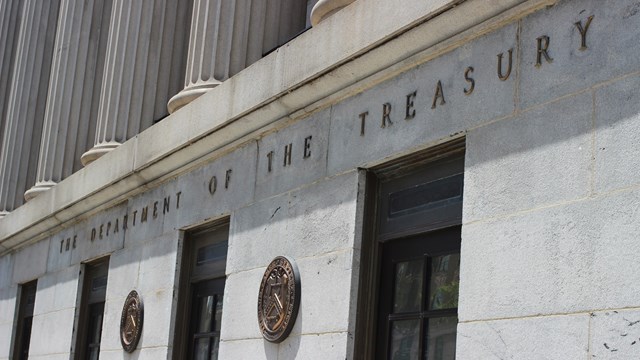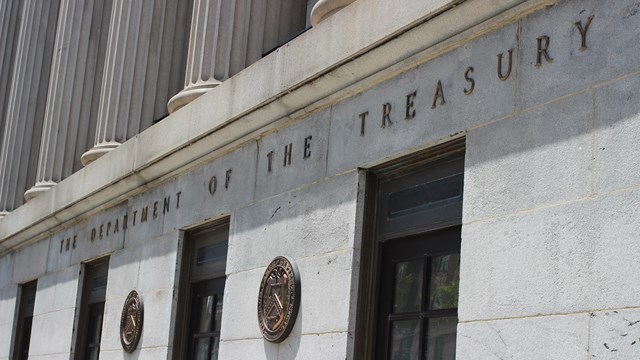With the advent of relatively cheap and accessible television source options such as Verizon’s FiOS TV, Cablevision’s Optimum and Comcast’s Xfinity, it might surprise some to hear that the seemingly antiquated satellite dish is still a mainstay in New Jersey multifamily buildings. Trendy as they might be, dishes come with aesthetic and safety concerns from residents, boards and management companies alike.
Cell phone towers are the next tech accessory to become increasingly prevalent in multifamily buildings. Gone are the days when they simply signified increased coverage, communication abilities and the end of the dreaded dropped call. Tower sites can now serve as an additional source of income to buildings that lease out property space to cell companies. While the added income is highly beneficial to associations, cell sites can pose structural threats if not installed/maintained properly, or worse, leave associations trapped in an unfair lease.
Dish Debacles
The number of clunky dishes peppered atop Bayonne homes grew at such an overwhelming rate within the past few years that Bayonne’s City Council proposed an ordinance that would require residents to remove unused satellite dishes. While Council president Terry Ruane's main concern was ridding Bayonne buildings of dish eyesores, residents were concerned about the logistic of dish removal. The proposed ordinance was tabled in June of 2012 to allow for city officials to create an unused dish removal plan. No further progress has been made on the measure at the time of publication.
Removal is not the only thing that Bayonne’s council members need to worry about. Similar measures have been proposed across the nation, such East Boston City Council Member Salvatore LaMattina's 2012 attempt but ultimately blocked by the Federal Communications Commission (FCC) for being in violation of the entity’s rules for Over-the-Air-Reception-Devices (OTARD), which were adopted in 1996.
According to the FCC, OTARD rules prohibit restrictions on a property owner or tenant’s right to install, maintain or use an antenna to receive video programming from direct broadcast satellites, broadband radio services and television broadcast stations. The rules apply specifically to dishes that are one meter or less in diameter and used to receive direct broadcast services.
OTARD allows local governments, community associations and landlords to enforce restrictions that do not impair the installation and maintenance of such equipment. Under some circumstances where a central or common antenna is available, a community association or landlord may restrict the installation of individual antennas. The rule does not apply to common areas that are owned by a landlord, community association or jointly by condominium or cooperative owners where the antenna user does not have an exclusive use area. Such common areas may include the roof or exterior wall of a multiple dwelling unit. Therefore, restrictions on antennas installed in or on such common areas are enforceable.
These OTARD rules were created for a specific reason. “OTARD was established to ensure that individuals had unfettered access, to the greatest extent possible, to over-the-air communications,” says Stacey Patterson, counsel at Herrick, Feinstein LLP, a law office with locations in New Jersey and New York. The OTARD rules apply specifically to dishes that are 1 meter or less in diameter used to receive direct broadcast services.
Other Dish Concerns
As evidence of Bayonne's proposed ordinance, the eyesore factor is a real problem when it comes to dishes, and associations are quick to regulate dishes in order to maintain curb appeal. However, other concerns such as safety come into play as well.
“For example, they can restrict the placement of these satellite dishes for safety reasons or if there are historical preservation concerns,” Patterson says. “Further, provided that the aesthetic restrictions do not violate OTARD (if a co-op or condo requires a dish to be painted to match the color of the building, said painting cannot violate the warranty on the dish or be held in violation of OTARD), they can be likely imposed.”
Another reasonable restriction, Patterson says, is to require that the dish isn’t placed in an unobtrusive place so as not to put anyone at risk of physical harm. The co-op or condo may also require the owner to indemnify the association for any damages that result from placement of the dish.
An option some buildings prefer—to lessen the liability and the rules—is to require the owner to use a common satellite dish rather than individual dishes provided it meets certain requirements.
This common dish must provide all, if not more, reception and transmission services than a unit owner could receive using his or her own antenna; it must provide all—if not more reception and transmission services than a unit owner could receive using his or her own antenna; it must require any extra costs to the owners beyond that of installing and maintaining a personal antenna; and installation and connection to the common antenna must not result in any delay beyond what a unit owner would experience in installing and maintaining a personal antenna, Patterson says.
Calling All Residents
The presence of cell phone towers has grown considerably in the past 25 years. There are currently more than 190,000 cell phone towers in the United States, according to Airwave Management, LLC, a full-service wireless consulting company originally based in New Jersey the main office has since relocated from Morris County to North Carolina, and maintains an office in Westchester County, New York). Comparatively, there were only about 900 in 1985.
Buildings can hide cell towers on their rooftops. Typically, the cell company or wireless service provider negotiates a lease for an installation site and agrees to service and maintain the tower. The building benefits from rental income. Estimating potential monetary gain is not easy, as rental profits range vastly from location to location.
“Many people will tell you there is an average that is used but that is not the case—there is a very wide range when it comes to cell site rental rates,” says Steve Kazella, the president of Airwave Management, who has 14 years of wireless site acquisition experience.
“Recently, we have seen a major carrier offer a cell site with no rent for the benefit of having coverage at their building and the surrounding neighborhood. We’ve seen a landlord take a deal for $100 per year ($8.33 per month) because they needed coverage so badly. And we’ve seen residential rooftops in the greater New York City metro area with carriers paying upwards of $6,000 and $7,000 per month because they had no other choice. There are some sites in Massachusetts, New York and New Jersey only worth $1,200 or $1,300 per month, but there are others worth $2,500 to $4,000.”
According to Kazella, the price of a lease for a cell tower is not determined by a square foot basis, rather, value is determined by the coverage a particular site can provide. Other price factors include the price of other local competing sites, as well as the zoning and geographical characteristics of the site.
“Cell site pricing is all based on basic wireless economics of supply of available sites, and carrier’s demand for coverage,” Kazella explains.
The average cost of building a cell phone tower is around $150,000—but it’s often well worth the investment. The average yearly cell phone tower lease rate in the U.S. is $45,000. Massachusetts has the highest cell tower lease rates, ranging from $91,000–$535,000.
“There are a lot of different factors the companies take into consideration when siting a tower. Obviously buildings in more dense areas are more desirable than those in rural areas,” says Lisa A. Magill, an attorney with Becker & Poliakoff, an international law firm with offices in New Jersey, New York, Florida, Virginia, Washington D.C. and Prague, Czech Republic. “The factor that other cell towers are located in the same region may be either a negative or a positive factor. Positive in that there is a need for service in the area and it is more likely than not the local building department or other agency with jurisdiction will allow the installation. Negative in that the need may already be met for that particular area. Access to the facility and the availability of staging areas and equipment storage and the like is generally a factor since the provider has to take its construction costs into account.”
Rules and Regulations
According to the experts, there are several legal issues associated with contracting for the construction and use of a cell tower on a building. Boards should consult with counsel because they might need membership approval before they can make any arrangements with the provider. If the condominium is part of a community of condominiums or subject to other deed restrictions, the board may have to garner the approval of neighboring residents as well. A board should look to its building’s documents for any allowance for leasing common area property, as well as owner approval requirements, if any.
Debunking Cell Tower Health Risks
Unfounded claims of cell tower radiation health hazards have buzzed about for the past two decades, leaving many worried that the towers are carcinogenic. The FCC investigated these rumors fully in 1996 and ultimately found that cell towers do not have an adverse effect on health, Kazella says. In fact, the FCC was so assured of cell tower site safety that it removed health concerns as a reason for turning down cell site applications from its policy, he adds.
The FCC might have declared cell towers safe 18 years ago, but that hasn’t prevented apprehension among some associations.
Kazella acknowledges people’s health-based concerns, but says such trepidation toward cell towers needs to be addressed with factual information.
“When studies are done to present to planning or zoning boards, the actual emissions are significantly lower than those of standard everyday items that people utilize such as their computers, driving in their cars or even walking into sunlight,” Kazella says. “These frequencies are not new and have been used for years. Frequencies used in the late ‘80s early ‘90s were from the old UHF televisions, and those were operating at much higher power levels. Usually cell phone towers operate at a fraction of what they are really allowed to. When studies are done, they show the worst case scenario with every channel in that cell site operating at full power, which is very rarely the case. Calculations show the cell site emissions are less than half of 1 percent of the allowable standards,” Kazella explains.
Sign Carefully
Kazella says that while cell tower leases are a wonderful way for an association to get revenue, there is nothing worse than being stuck in a poorly crafted long term lease.
“We can’t stress enough that associations should have the same level of expertise cell companies possess when negotiating one of these deals,” he says. “If you do not have the same ability and expertise in analyzing this data and keeping everyone honest, you are negotiating from a position of weakness,” he warns.
“Talk to an industry professional. Hiring the wrong consultant can literally be the difference of a few hundred thousand dollars over a 25 to 30 year period. It is also important that the consultants you hire have no conflicts working for any of the tower companies or carries. You need someone truly independent that will work in your best interests.”
Like any other association related business transaction/contract, it's the board's fiduciary duty to be well aware of the process and to be on the lookout for potential warning signs that could indicate shady practices.
“Red flags to look for are letters of intent, deal memos or term sheets which carrier representatives hurriedly rush you to sign,” Kazella says. “These need to be avoided, especially when you haven't seen the lease agreements or the architectural site plans. Never ever sign one of these documents before you have all the details.”
Placing an antenna or other telecom technology on your property can be a smart, lucrative move for a condo or co-op association—as long as you stay on the right side of the law (and your own governing docs), do your homework, and partner with an experienced, reputable carrier/installer.
Enjolie Esteve is an editorial assistant at The New Jersey Cooperator. Danielle Braff, a freelance writer and a frequent contributor, contributed to this article.







Leave a Comment